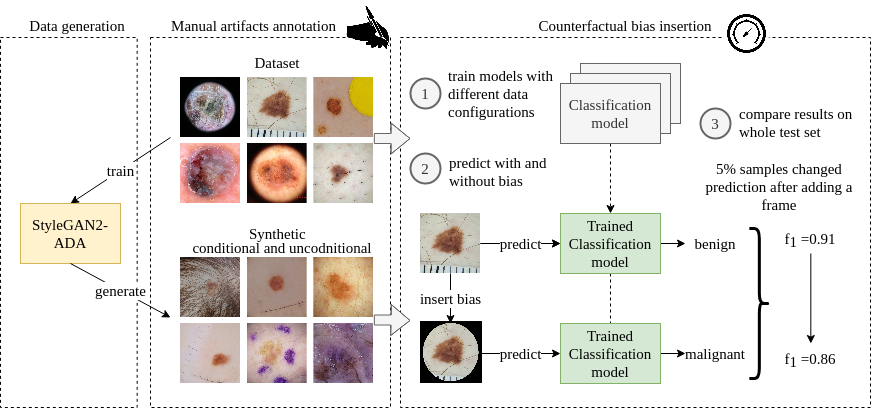The (de)biasing effect of GAN-based augmentation methods on skin lesion images
New medical datasets are now more open to the public, allowing for better and more extensive research. Although prepared with the utmost care, new datasets might still be a source of spurious correlations that affect the learning process. Moreover, data collections are usually not large enough and are often unbalanced. One approach to alleviate the data imbalance is using data augmentation with Generative Adversarial Networks (GANs) to extend the dataset with high-quality images. GANs are usually trained on the same biased datasets as the target data, resulting in more biased instances. This work explored unconditional and conditional GANs to compare their bias inheritance and how the synthetic data influenced the models. We provided extensive manual data annotation of possibly biasing artifacts on the well-known ISIC dataset with skin lesions. In addition, we examined classification models trained on both real and synthetic data with counterfactual bias explanations. Our experiments showed that GANs inherited biases and sometimes even amplified them, leading to even stronger spurious correlations. Manual data annotation and synthetic images are publicly available for reproducible scientific research.
PDF Abstract


